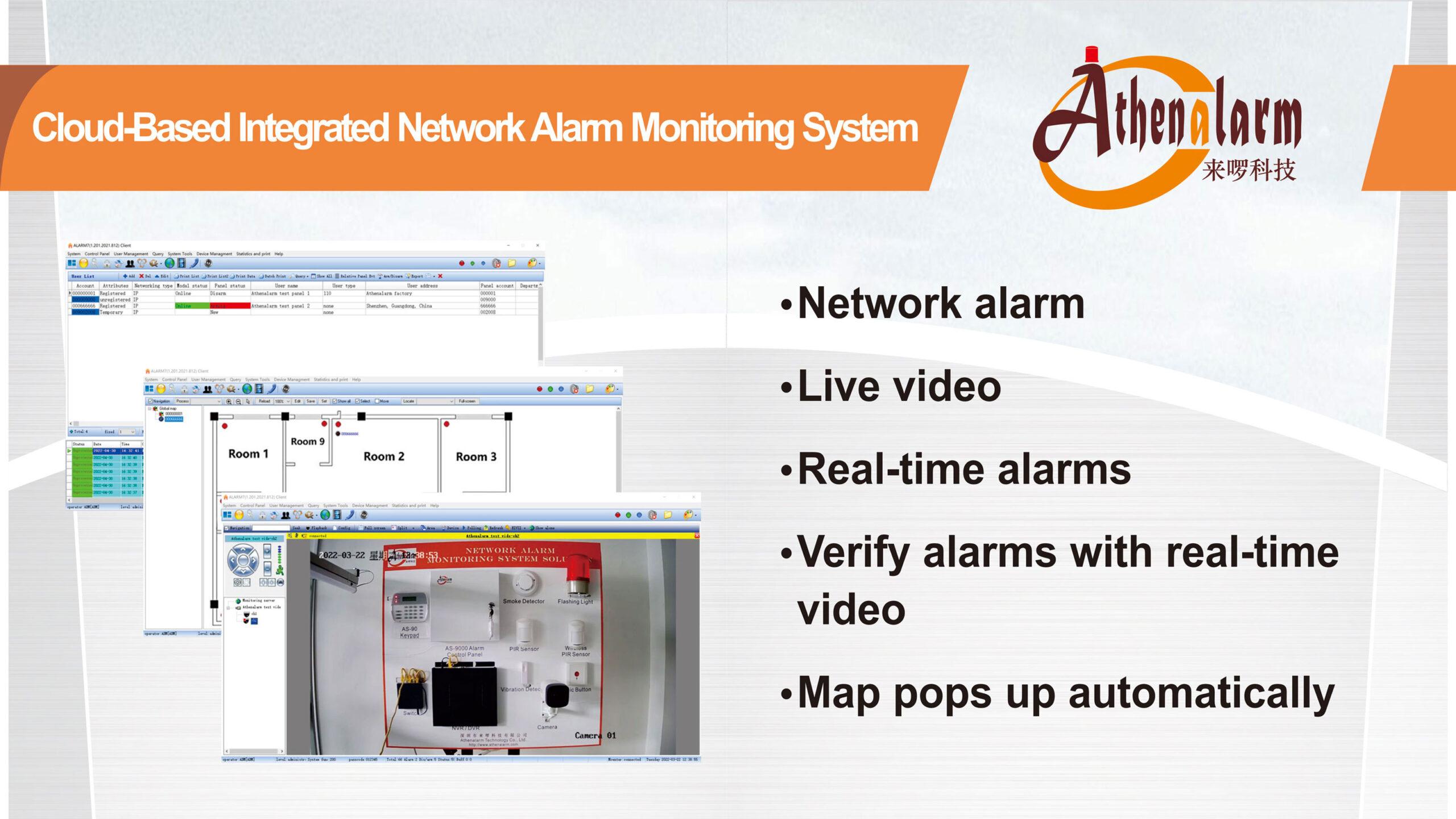



Reasons and Solutions for False Alarms in Intrusion Detection Sensors
Intrusion detection sensors are the front-end equipment of intrusion alarm systems, installed in places that require prevention. It detects intruders by detecting changes in on-site conditions or certain physical parameters, and sends an alarm signal to the intrusion alarm control panel through the transmission system.
Intrusion detection sensors are a crucial component of the entire intrusion alarm system, which largely determines the performance indicators of the intrusion alarm system, such as detection range, detection sensitivity, false alarm rate, missed alarm rate, etc.
There are various types of intrusion detection sensors with different functions. According to the size of the detection range, intrusion detection sensors have point, line, surface, space, and perimeter types. According to the different detection principles of intrusion detection sensors, there are various types of intrusion detection sensors, such as switches, vibrations, microwaves, ultrasonic waves, infrared rays, etc.
A large intrusion alarm system generally requires multiple intrusion detection sensors. By combining different types of intrusion detection sensors, the intrusion alarm system can have better performance, higher reliability, and greater effectiveness.
1 Reasons for false alarms in intrusion detection sensors
The alarm issued when there is no intrusion is called a false alarm.
False alarms may be caused by component failures or certain external influences, and the adverse consequences are unimaginable. The lightest consequence is that it adds unnecessary trouble and makes people feel bored, greatly reducing the credibility of intrusion detection sensors. It can be imagined that if store and warehouse managers are often called out of bed due to false alarms, they will not be willing to use this intrusion alarm system. The worst consequence is that it causes police or security personnel to rush to the scene unnecessarily, endangering their own safety and the safety of those around them.
Therefore, false alarms are the fatal weakness of intrusion alarm systems. What situations can cause false alarms? How should we solve this problem? Let’s take a look at several reasons for false alarms:
- Intrusion detection sensors have poor anti-interference ability, resulting in co frequency interference
- Inaccurate judgment of intrusion behavior
- Infrared sensors are susceptible to environmental factors such as temperature and light
- Due to the wireless coding method used by both the intrusion alarm control panel and intrusion detection sensor, if the coding is set to be duplicate, it may cause the intrusion alarm control panel and intrusion detection sensor to have duplicate codes
- Some intrusion detection sensors have poor quality, such as damaged components and poor production processes
- Selection, installation method, angle, and position of intrusion detection sensors
- Under environmental influences such as air flow, pet movements, etc.
- Human factors mainly include improper user operation, accidental triggering of intrusion detection sensors, as well as accidental intrusion and entry into already fortified defense areas.
2 Solution
There are many complex reasons for false alarms generated by intrusion detection sensors. Therefore, to reduce false alarms of intrusion detection sensors, we must consider multiple factors.
(1) Select appropriate intrusion detection sensors to reduce false alarms
Each intrusion detection sensor has the ability to detect personnel entry and exit within the prevention area, and the components in the device that perform this task are called sensors or sensors.
An ideal intrusion detection sensor only responds to the presence of personnel, without responding to the activities of animals such as dogs, cats, and mice, nor to changes in indoor environment such as temperature, humidity, wind, rain sounds, and vibrations. It is not easy to achieve this, as most devices not only respond to human presence, but also to the influence of some irrelevant factors.
Another very important feature is that the normal body temperature can emit infrared radiation, and infrared sensors can be used to detect the amount of heat emitted by the human body. In addition, intruders are inevitably required to make noise during theft, and using sound sensors can detect abnormal sounds emitted indoors. The use of ultrasound and microwave intrusion detection sensors operates based on the principle that human movement can interfere with ultrasound or electromagnetic fields.
Select intrusion detection sensors from a technical and performance perspective, including the selection of sensors, the design of Fresnel lenses, microprocessor programs, multi detection technology, automatic skip code rolling coding technology, production process, usage methods, temperature compensation, sensitivity detection distance adjustment, etc. These comprehensive factors all determine the performance and false alarm rate of the intrusion detection sensors.
(2) Reasonably installing intrusion detection sensors to reduce false alarms
The selection and installation of intrusion detection sensors should also consider making them unresponsive to irrelevant factors, while ensuring good signal repeatability.
When designing an intrusion alarm system, the first step is to grasp and analyze the characteristics of various intrusion actions. When an intruder enters the room, they first need to eliminate obstacles. They must open doors and windows, or make holes in walls, floors, and ceilings. Therefore, some switch sensors can be installed to trigger the alarm when the intruder starts moving. Another characteristic that should be considered is that light and infrared cannot pass through the human body, so the installation of photoelectric devices can be used to detect intrusion activities.
Due to the different situations of departments such as households, shops, groups, and businesses, the intrusion detection sensors used are also different. In order to achieve the best security effect, it is usually necessary to tailor the intrusion alarm system according to the actual situation of the user, so that the sensors can play a better role.
Various intrusion detection sensors have their own different working principles, each with its own advantages and disadvantages. To enable the sensor to function effectively in any situation, careful selection and installation should be carried out, and protective measures for the sensor should be taken into consideration as much as possible during installation.
(3) Methods to reduce false alarms in infrared sensors
Infrared sensors are the most widely used intrusion detection sensors. Reducing false alarms from infrared sensors can effectively reduce the false alarm rate of the entire intrusion alarm system. How to reduce false alarms of infrared sensors?
At the focal point of the infrared lens, two photo-thermal devices connected by different circuits are applied. The special lens divides the coverage area into multiple sensitivity trapezoidal protection zones and ensures signal strength within the protection zone. The unique lens can also serve as an infrared filter, and the black lens with a specially treated surface allows visible light and shortwave infrared (which are present in most places with white light sources) to be emitted and then absorbed by its black base. The black infrared lens only reflects infrared rays with wavelengths that match the movement of the human body, reflecting them onto the photo-thermal sensor. By using a white light filter, the sensor can prevent white light interference. If someone enters or leaves one or several areas covered by the sensor, the sensor should be able to detect changes in infrared radiation energy. A/D digitizes the signal sent by the sensor, analyzes it with a processor, and then issues an alarm signal.
This process involves all the standards in detection, such as signal amplitude, time, format, energy, and spectrum, along with statistical information extracted from the actual site. These standards must be combined to determine the rationality of detecting them, and the sensor will only sound an alarm when the results meet the criteria for forced intrusion. Digitizing the signal of the photo-thermal sensor can eliminate signal transients and electromagnetic interference.
At present, it occupies a certain market share and is not sensitive to changes in temperature and light. Through the combination of two detection units, the passive infrared sensor with dual detection has greatly reduced the possibility of false alarms.
In summary, the sensitivity and reliability of intrusion detection sensors are interdependent. Reasonably selecting the detection sensitivity of intrusion detection sensors and adopting different measures to resist external interference can improve the performance of intrusion detection sensors. The adoption of different anti-interference measures determines the performance of intrusion detection sensors in different environments. Understanding the performance and characteristics of various intrusion detection sensors, and configuring different intrusion detection sensors reasonably according to different usage environments is a key link in the system. Various intrusion detection sensors have their own different working principles, advantages and disadvantages. To ensure that intrusion detection sensors can effectively function in any situation, careful selection and installation should be carried out.
